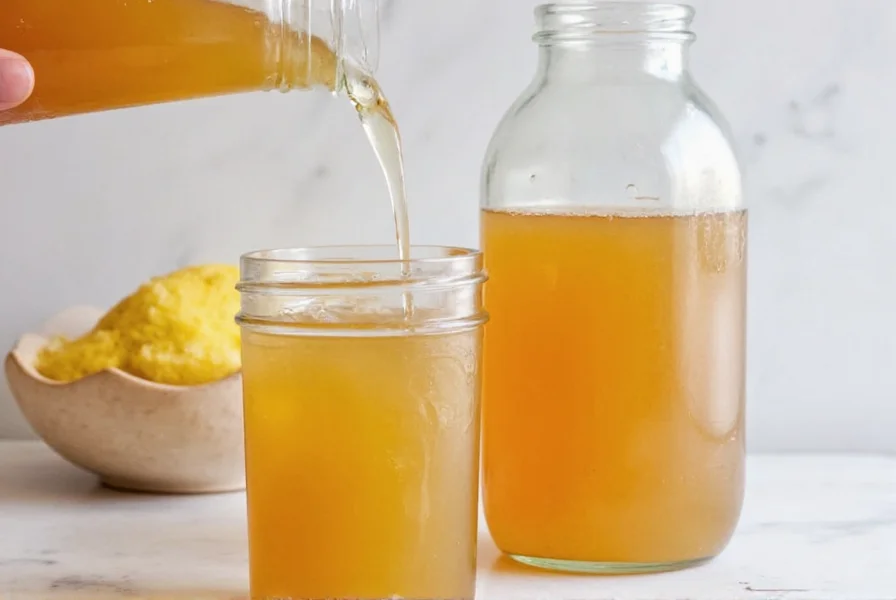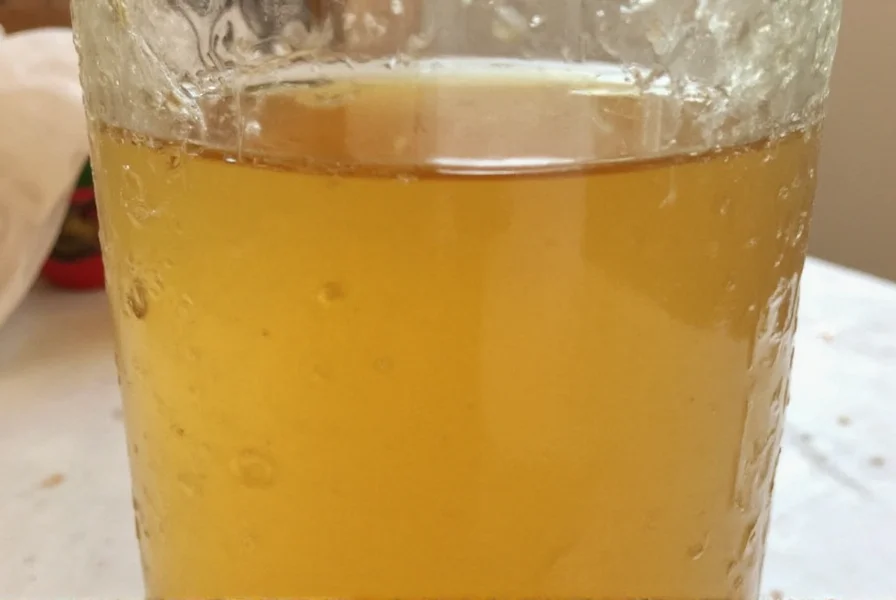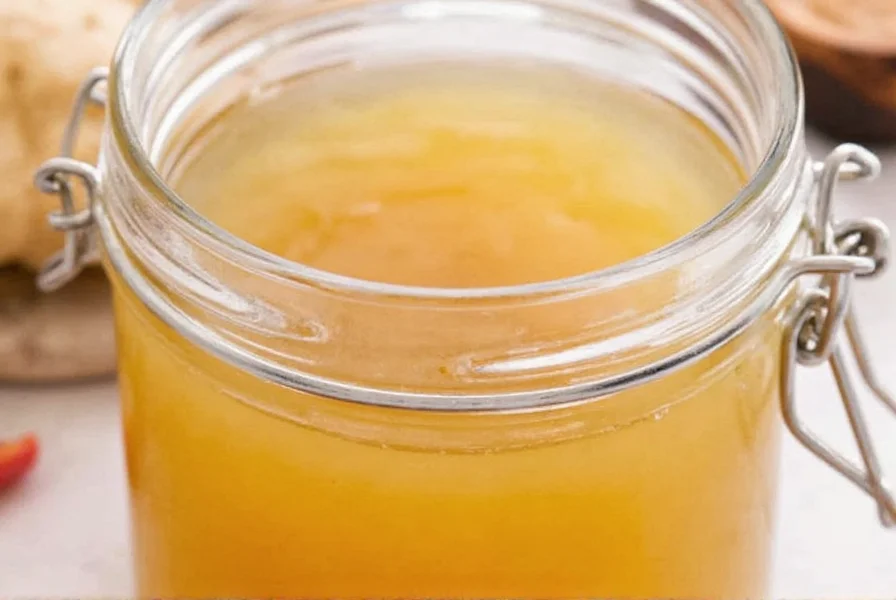Creating homemade ginger syrup unlocks a world of flavor possibilities for your beverages and desserts. Unlike store-bought versions filled with preservatives and artificial flavors, this simple preparation captures the vibrant, spicy essence of fresh ginger root. Whether you're crafting signature cocktails, soothing herbal teas, or unique dessert sauces, this foundational recipe delivers consistent results with minimal effort.
Why Make Your Own Ginger Syrup
Commercial ginger syrups often contain high-fructose corn syrup, artificial flavors, and unnecessary additives. By preparing your own ginger syrup recipe at home, you control the ingredients and intensity of flavor. Fresh ginger root contains gingerol, the compound responsible for ginger's characteristic heat and numerous health benefits. When transformed into syrup, these beneficial compounds become easily incorporable into your favorite drinks and dishes.
Essential Ingredients for Perfect Ginger Syrup
The beauty of this ginger simple syrup preparation lies in its simplicity. You only need three ingredients, but their quality matters:
- Fresh ginger root - Choose firm, smooth-skinned roots with no soft spots. Younger ginger has thinner skin and more moisture.
- Granulated sugar - White sugar provides neutral sweetness that doesn't compete with ginger's flavor.
- Purified water - Avoid tap water with strong mineral tastes that could affect the final product.
| Ingredient | Standard Recipe | Double Batch | Half Batch |
|---|---|---|---|
| Fresh ginger root (peeled) | 1 cup, sliced | 2 cups, sliced | ½ cup, sliced |
| Granulated sugar | 1 cup | 2 cups | ½ cup |
| Water | 1 cup | 2 cups | ½ cup |
Equipment You'll Need
Before starting your ginger syrup preparation, gather these basic kitchen tools:
- Medium saucepan with lid
- Sharp vegetable peeler or spoon
- Sharp knife and cutting board
- Fine-mesh strainer or cheesecloth
- Glass storage container with tight-fitting lid
- Measuring cups and spoons
Step-by-Step Ginger Syrup Instructions
Follow these detailed instructions for perfect ginger syrup every time:
- Prepare the ginger - Peel the ginger root using a spoon (running the edge along the skin is more efficient than a peeler) or vegetable peeler. Slice into thin coins - no need to be precise, as you'll strain the syrup later.
- Combine ingredients - In a medium saucepan, combine the sliced ginger, water, and sugar. Stir gently to dissolve some of the sugar.
- Initial simmer - Bring the mixture to a gentle boil over medium-high heat, then reduce to low. Cover and simmer for 10 minutes to soften the ginger and extract flavor.
- Reduce uncovered - Remove the lid and continue simmering for another 10-15 minutes, or until the liquid has reduced by about one-third. The syrup should coat the back of a spoon.
- Cool and strain - Remove from heat and let cool for 15 minutes. Strain through a fine-mesh sieve into your storage container, pressing gently on the ginger solids to extract maximum flavor without clouding the syrup.
- Final cooling - Let the strained syrup cool completely at room temperature before refrigerating. This prevents condensation inside the storage container.
Proper Storage for Maximum Shelf Life
Understanding ginger syrup shelf life is crucial for food safety and quality preservation. Follow these storage guidelines:
- Always use a clean, airtight glass container - mason jars work perfectly
- Refrigerate immediately after cooling to room temperature
- Consume within 3 weeks for best flavor and safety
- Check for cloudiness, mold, or off smells before each use
- Never introduce contaminants by dipping dirty spoons into the container
For extended storage, freeze the syrup in ice cube trays, then transfer the frozen cubes to airtight bags. Frozen ginger syrup maintains quality for up to 6 months.
Creative Variations and Uses
Once you've mastered the basic ginger syrup recipe, experiment with these variations:
- Lemon-ginger syrup - Add the zest of one organic lemon during the last 5 minutes of simmering
- Spiced ginger syrup - Include 2 cinnamon sticks, 4 whole cloves, and 1 star anise pod during simmering
- Ginger-lemon syrup for immunity drinks - Add 2 tablespoons of fresh lemon juice after straining
- Hot ginger syrup - Leave some ginger fibers in the syrup for extra heat
Use your homemade ginger syrup for:
- Craft cocktails like Moscow Mules, Dark 'n' Stormys, and ginger margaritas
- Flavoring hot or iced teas
- Sweetening lemonades and other beverages
- Glazing roasted vegetables or proteins
- Adding to baked goods and dessert sauces
Troubleshooting Common Issues
Even with this straightforward ginger syrup preparation, you might encounter these issues:
- Syrup too weak - Next time, increase ginger quantity or extend simmer time by 5-10 minutes
- Syrup too strong - Dilute with equal parts water or use less syrup in your drinks
- Cloudy appearance - This is normal with fresh ginger; strain through cheesecloth for clearer syrup
- Crystallization - Gently reheat the syrup and add a teaspoon of water
- Short shelf life - Ensure proper sterilization of containers and maintain refrigeration

Expert Tips for Superior Results
Elevate your ginger syrup recipe with these professional techniques:
- Use a microplane to grate some ginger directly into the syrup for more intense flavor
- For a more delicate flavor, peel the ginger thoroughly to remove fibrous outer layers
- Try using raw turbinado sugar for a deeper, caramel-like flavor profile
- Add a pinch of salt at the end to balance and enhance all flavors
- Let the strained ginger solids dry and use them to make ginger tea
Remember that ginger intensity varies by season and source. Taste your syrup before finalizing storage—adjust with additional sugar syrup (equal parts sugar and water, heated until dissolved) if needed.

Frequently Asked Questions
How long does homemade ginger syrup last in the refrigerator?
Properly stored in a clean, airtight glass container, homemade ginger syrup maintains quality for 2-3 weeks in the refrigerator. Always check for cloudiness, mold, or off smells before using. For extended storage, freeze the syrup in ice cube trays for up to 6 months.
Can I make ginger syrup without sugar?
While traditional ginger syrup requires sugar for preservation and proper consistency, you can create a sugar-free version using a sugar substitute like erythritol or stevia. However, the shelf life will be significantly shorter (about 1 week), and the texture will differ from traditional syrup. For best results with substitutes, follow specific sugar-free syrup recipes designed for your chosen sweetener.
Why is my ginger syrup cloudy?
Cloudiness in ginger syrup is completely normal and results from microscopic ginger particles suspended in the liquid. This occurs because fresh ginger contains starches and fibers that don't fully dissolve. For clearer syrup, strain through multiple layers of cheesecloth or a coffee filter, though this may reduce some flavor intensity. The cloudiness doesn't affect taste or safety.
What's the best way to use ginger syrup in cocktails?
For cocktails, use 0.5-0.75 ounces of ginger syrup depending on desired sweetness and spice level. Shake with spirits and citrus for balanced drinks, or stir into spirit-forward cocktails. Ginger syrup works particularly well in Moscow Mules, Dark 'n' Stormys, and whiskey-based cocktails. For a spicy kick, add an extra barspoon of syrup to your favorite margarita or daiquiri recipe.
Can I adjust the spiciness of my ginger syrup?
Absolutely. The spiciness of ginger syrup depends on several factors: younger ginger tends to be milder, while older ginger has more heat. For milder syrup, peel thoroughly and remove fibrous parts. For hotter syrup, leave some skin on or add grated ginger during the last few minutes of simmering. You can also control heat by adjusting simmer time—longer cooking extracts more gingerol compounds responsible for the spicy sensation.











 浙公网安备
33010002000092号
浙公网安备
33010002000092号 浙B2-20120091-4
浙B2-20120091-4